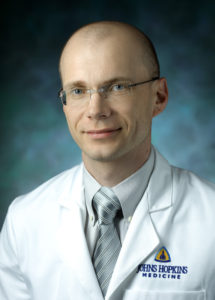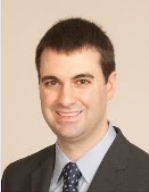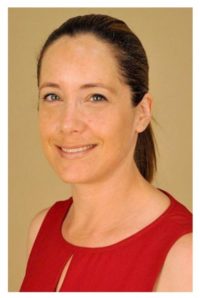In conjunction with the annual meeting of the International Anesthesia Research Society (IARS)
Place: Zoom Platform (virtual)
Time: Monday, March 21, 2022 (10:00 AM to 4:35 PM EST)
Course Syllabus
Program overview:
This SATA National meeting is a virtual meeting that has been designed to provide a broad spectrum of clinicians with a review of the latest updates on a variety of intra-operative and critical care management topics that involve abdominal and thoracic transplant patients.
Learning objectives:
- Discuss clinical approaches in the perioperative management of liver transplant patients with metabolic syndromes (Pediatric) or obesity (adult)
- Discuss clinical management of adult liver transplant patients with ECMO support
- Review the current practice management of liver transplantation anesthesia in adult and pediatric population based on National Surveys and UNOS organ allocation system
- Share the experience as Director of adult liver transplantation anesthesia to seek a better practice management
- Discuss the importance of the national anesthesia database in transplant anesthesia research
- Debate the pros and cons of the use of opioids for liver transplantation recipients
- Review current practices in thoracic transplantation anesthesia in the area of COVID
- Review current practices of DCD donors on heart transplantation and lung transplantation for the patients with severe pulmonary hypertension
Target audience:
Specialists working in the area of organ transplantation (ex., transplant anesthesiologists, intensivists, transplant surgeons, other transplant medicine specialists, and CRNAs); Trainees (ex., residents, fellows); Students (medical students, nursing students)
Accreditation and CME credit designation:
In support of improving patient care, this activity has been planned and implemented by the University of Pittsburgh and SATA. The University of Pittsburgh is jointly accredited by the Accreditation Council for Continuing Medical Education (ACCME), the Accreditation Council for Pharmacy Education (ACPE), and the American Nurses Credentialing Center (ANCC), to provide continuing education for the healthcare team.
The University of Pittsburgh Medical Center designates this live activity for a maximum of 5.25 AMA PRA Category 1 Credit™. Physicians should claim only the credit commensurate with the extent of their participation in the activity. To claim your CME: http://cce.upmc.com/sata-march-21-2022
Program committee members:
- Tetsuro Sakai, MD, PhD, MHA (University of Pittsburgh)
- Gebhard Wagener MD (Columbia University Irving Medical Center)
Platform: Zoom Webinar (address and password will be provided at the time of registration)
Registration: SATA 2022 Symposium – Registration
Registration Fee:
-
- SATA members or SCA members: $50
- Non-SATA members: $100
- Free if:
- you join SATA ($150 annual membership: https://www.transplantanesthesia.org/iump-subscription-plan/) at the time of registration.
- you are trainees, medical students, or international medical personals who do not need CME credits.
-
- Lecturers and moderators of the meeting
10:00 – 10:05: Welcome and Introduction of SATA
Gebhard Wagener MD (Columbia University Irving Medical Center)
10: 05 – 11:05: Panel-1: New Topics in Abdominal Transplant Anesthesiology
Moderator: Adrian Hendrickse MD, MMEd (University of Colorado)
- Considerations for liver transplant in metabolic syndromes (SPA)
Andrew J Costandi, MD, MMM (Children’s Hospital Los Angeles)
In collaboration with the Society for Pediatric Anesthesia (SPA)
- ECMO and Liver Transplantation (SOCCA): getting out of the OR is not everything
Lovekesh Arora, MBBS, MD (University of Iowa)
In collaboration with the Society of Critical Care Anesthesiologists (SOCCA)
- Transplantation and the obese patient
Katie Forkin, MD (University of Virginia)
11:05 – 12:15: Panel-2: The Practice of Transplant Anesthesiology
Moderator: Ranjit Deshpande, MD (Yale University)
- National LT practice survey: adult (12 min)
Cara Crouch, MD (University of Colorado)
- National LT practice survey: pediatrics (12 min)
Marina Moguilevitch, MD (Montefiore Medical Center)
- Adult liver transplantation anesthesia practice management and the role of the transplant anesthesia director (12 min)
Aalok Kacha, MD, PhD (University of Chicago)
- UNOS and organ allocation: adult and pediatrics (8 min)
Gebhard Wagener, MD (Columbia University Irving Medical Center)
12:15- 12:25 : Break
12:25 – 12:35: SATA President Address
Tetsuro Sakai, MD, PhD, MHA, FASA (University of Pittsburgh)
12:35 – 13:35: Keynote Address
Moderator: Lorenzo De Marchi, MD (MedStar Georgetown University Hospital)
How do we use data to advance research and clinical practice in transplantation
Dieter Adelmann, MD (University of California – San Francisco)
13:35 – 14:20: Pro/Con Debate
Moderators: Ramona Nicolau-Raducu, MD, PhD (University of Miami)
Sher-Lu Pai, MD (Mayo Clinic Jacksonville)
My goal is to avoid perioperative opioids for adult liver transplant recipients
- Pro: Natalie Smith, MD (Icahn School of Medicine at Mt. Sinai)
- Con: Sathish Kumar, MD (University of Michigan)
14:20- 14:30 : Break
14:30 – 15:30: Panel-3: Thoracic Organ Transplantation
Moderators: Barbara Wilkey, MD (University of Colorado)
Kathir Subramaniam, MD, MPH (University of Pittsburgh)
- DCD Transplantation: what is it and is it feasible for heart transplants?
Megan Chacon, MD (University of Nebraska Medical Center)
- Lung transplant for pulmonary hypertension and the role of circulatory support
Andrea Miltiades, MD (Columbia University Irving Medical Center)
- Thoracic Transplantation for COVID-19
Yong Peng, MD (University of Florida)
15:30 – 15:35: Closing remarks
Jiapeng Huang, MD (SATA Treasurer, University of Louisville)
15:35 – 16:35: Council meeting
Open to members
Faculty Disclosure
All individuals in a position to control the content of this education activity have disclosed all financial relationships with any companies whose primary business is producing, marketing, selling, re-selling, or distributing healthcare products used by or on patients. All of the relevant financial relationships for the individuals listed below have been mitigated:
- Dieter Adelmann, MD: Haemonetics Inc (Grant/Research Support)
- Tetsuro Sakai, MD, PhD, MHA: Springer Inc. (Book royalty), Haemonetics Inc (Grant/Research Support)
- Kathir Subramaniam, MD, MPH: National Institute of Health (Site PI; Grants for institution)/Haemonetics/Edwards Life Sciences (Site Co PI; Institution)
No other members of the planning committee, speakers, presenters, authors, content reviewers and/or anyone else in a position to control the content of this education activity have relevant financial relationships with any companies whose primary business is producing, marketing, selling, re-selling, or distributing healthcare products used by or on patients.
Disclaimer Statement
The information presented at this CME program represents the views and opinions of the individual presenters. It does not constitute the opinion or endorsement of, or promotion by, the UPMC Center for Continuing Education in the Health Sciences, UPMC / University of Pittsburgh Medical Center or Affiliates and University of Pittsburgh School of Medicine. Reasonable efforts have been made to prepare the educational subject matter in a balanced, unbiased fashion and in compliance with regulatory requirements. However, each program attendee must always use their own personal and professional judgment when considering further application of this information, particularly as it may relate to patient diagnostic or treatment decisions, including, without limitation, FDA-approved uses and any off-label uses.






